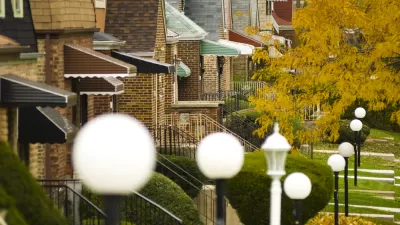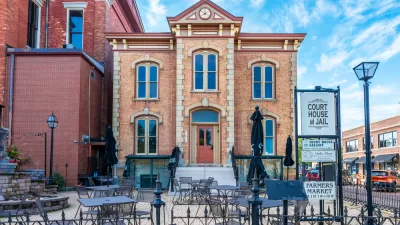Ben Austen traces how foreclosures, crime, and depopulation have decimated areas in the South and West Sides of Chicago, and the 'do-it-yourself empowerment zones' that are trying to make use of vacant properties and turn around these neighborhoods.
"As hard as the foreclosure crisis hit Chicago, its force has been felt with an unevenness that can seem fiendishly unjust. The U.S. Postal Service, which tracks these numbers, reported that 62,000 properties in Chicago were vacant at the end of last year, with two-thirds of them clustered as if to form a sinkhole in just a few black neighborhoods on the South and West Sides. Currently about 40 percent of all homeowners in these communities owe more on their mortgages than their homes are worth, and countywide 80,000 foreclosures are wending their way through circuit court."
As we've noted before, Chicago story has become a tale of two cities: the city's hottest urban center surrounded by increasingly impoverished neighborhoods.
“'We’re not like Detroit, cordoning off sections of the city,' Benet Haller, Chicago’s principal adviser for planning and design, told me. 'But we are like London or Jakarta, with a hyperdense core — a zone of affluence — and something else beyond.' What the housing crisis has revealed, in stark relief, is a Chicago that already looks increasingly like this vision of a ring city, with the moneyed elite residing within the glow of that jewel-like core and the largely ethnic poor and working-class relegated to the peripheries, the banlieues."
"The conundrum that exists in Chicago, though, is what happens to the 'something else beyond' now that the center is prospering," writes Austen. "For the people trying to make their lives in the areas that J. R. and his fellow activists are trying to save, the question is not at all a theoretical one. The way many of them see it, they’re being sacrificed so that the city can be reborn."
FULL STORY: The Death and Life of Chicago

Alabama: Trump Terminates Settlements for Black Communities Harmed By Raw Sewage
Trump deemed the landmark civil rights agreement “illegal DEI and environmental justice policy.”

Planetizen Federal Action Tracker
A weekly monitor of how Trump’s orders and actions are impacting planners and planning in America.

The 120 Year Old Tiny Home Villages That Sheltered San Francisco’s Earthquake Refugees
More than a century ago, San Francisco mobilized to house thousands of residents displaced by the 1906 earthquake. Could their strategy offer a model for the present?

Opinion: California’s SB 79 Would Improve Housing Affordability and Transit Access
A proposed bill would legalize transit-oriented development statewide.

Record Temperatures Prompt Push for Environmental Justice Bills
Nevada legislators are proposing laws that would mandate heat mitigation measures to protect residents from the impacts of extreme heat.

Downtown Pittsburgh Set to Gain 1,300 New Housing Units
Pittsburgh’s office buildings, many of which date back to the early 20th century, are prime candidates for conversion to housing.
Urban Design for Planners 1: Software Tools
This six-course series explores essential urban design concepts using open source software and equips planners with the tools they need to participate fully in the urban design process.
Planning for Universal Design
Learn the tools for implementing Universal Design in planning regulations.
Clanton & Associates, Inc.
Jessamine County Fiscal Court
Institute for Housing and Urban Development Studies (IHS)
City of Grandview
Harvard GSD Executive Education
Toledo-Lucas County Plan Commissions
Salt Lake City
NYU Wagner Graduate School of Public Service





























